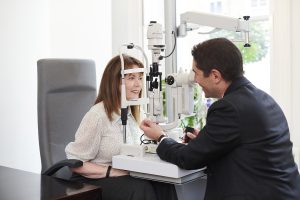When Can I Drive After Laser Eye Surgery Treatment?

When having any kind of surgery, it is only natural to consider the aftermath. How long until you are able to get back to your normal routine?
Well, let’s take a look at some examples.
After having your gall bladder removed, you’ll be looking at around two weeks before you can get back to your everyday life. For knee surgery, I’m afraid it’s more like six weeks. And a hip replacement? You will likely be “out of action”, so to speak, for around three months.
Obviously, the recovery time required for many traditional surgeries can be long, gruelling, and downright inconvenient. Unfortunately, there is no avoiding it.
If you have undergone any of these surgeries – or anything similar – you are probably hoping that you will never have to have another surgery again. But, what about Laser Eye Surgery?
Well, if you’re expecting weeks of recovery time, impaired movements, eye patches and the odd bump and fall along the way, you would be mistaken.
In reality, Laser Eye Surgery is surprisingly un-disruptive.
Surprisingly Short Recovery Times
You might be surprised to learn that the vast majority of our patients are back to their normal routine just a couple of days following their surgery. In fact, those that receive LASIK or ReLEx SMILE surgery can typically return to work the very next day!
But what about the other important stuff? Like driving, for example? Well, most Laser Eye Surgery patients are fit to drive within 24 hours of their surgery – amazing, I know. Figures from London Vision Clinic show that 98% of our patients are up to the legal driving standard or better on the first day after surgery.
It is important to remember, though, that this can vary from person to person. How long it will take for you to be fully ready to get back in the driver’s seat will be determined at your post-op evaluation. Furthermore, even though you’ll likely be scooting around again before you know it, there are a number of things to keep in mind before getting back behind the wheel.
Prof. Reinstein answers: When can I drive after Laser Eye Surgery?
In the video above, Professor Dan Reinstein offers us some reassuring words on getting back to driving after Laser Eye Surgery.
Thankfully, there won’t be a long period of relying on your friends and family or public transport to get you to where you need to be. But, it’s important to remember that every patient is different.
While the chances are you will be back to driving as normal before you know it, the road ahead won’t be fully clear until after your procedure. Nonetheless, your surgeon will be able to walk you through your journey to getting back behind the wheel at your 1-day post-treatment appointment.
Your post-treatment appointments are an important part of your Laser Eye Surgery journey. All good Laser Eye Surgery clinics will take these consultations seriously and ensure that a complete and thorough aftercare assessment is conducted the day after your procedure. This is to ensure your treatment went as well as possible and to determine when you are able to drive again – as well as get back to other everyday tasks.
As we said, the majority of patients are given the “all clear” there and then; however, depending on your individual circumstances and rate of recovery, it may be recommended that you wait a while longer. Don’t worry, though – your eyesight usually becomes stable in the next couple of days.
Taking care on the road after Laser Eye Surgery
While you may be legally allowed to drive following your surgery, there are some things you should be aware of during your recovery period. No matter your age or prescription, all Laser Eye Surgery patients should expect to experience some night-time effects following treatment.
In the early stages of your recovery – when you are already experiencing the improvements – your eyes are still responding to the treatment. Your eyes’ natural response will be to manage the swelling associated with treatment and to adjust to the new shape of your corneas.
In the short term, this can cause you to see some glare around lights. These usually take the form of ‘halos’ or ‘starbursts. In many cases, these side effects are mild and some patients may not notice anything out of the ordinary. However, during your recovery after Laser Eye Surgery, it is important to be aware of glare as it may affect your ability to drive – particularly at night.
A Normal Part of Your Recovery
If you are concerned about seeing some glare around lights – don’t worry! The important thing to remember is that this is a healthy sign that your eyes are healing and it won’t last forever.
If you find that night-time glare is affecting your ability to drive, it is advised that you cut down on your night-time driving, sticking to shorter distances if possible and always ensuring you have your lubricating eyedrops to hand.
In general, the night-time effects of Laser Eye Surgery last between a few weeks and a few months at the most. If, however, you experience prolonged effects, our staff will always be on hand to support you through the recovery process and address any concerns you may have.
Are you ready to start your journey to clearer vision? Book a Consultation today or speak with one of our friendly clinic coordinators on 020 7224 1005.


